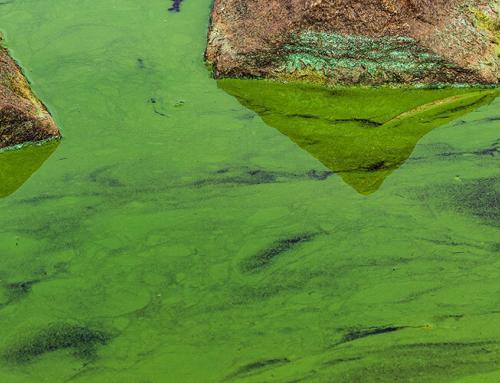From the California Office of Environmental Health Hazard Assessment
Microcystins:
January 2009 – A brief overview of their toxicity and effects, with special reference to fish, wildlife, and livestock.
Ecotoxicology Program
Integrated Risk Assessment Branch
Office of Environmental Health Hazard Assessment
California Environmental Protection AgencyCyanobacteria, also known as blue-green algae, are a family of single-celled algae that proliferate in water bodies such as ponds, lakes, reservoirs, and slow-moving streams when the water is warm and nutrients are available. Many cyanobacteria species produce a group of toxins known as microcystins, some of which are toxic.
Microcystins in general are liver toxins. Most of the understanding about the toxicity of microcystins is based on studies with mice and rats that received intra-peritoneal (IP) injections of microcystin LR, i.e. injections directly into the abdominal cavity. In these studies the injection of microcystins caused death within a few hours. Early manifestations of liver damage include an increase in serum of liver enzymes, a sign of liver cell death, and increased liver weight. Liver damage and cell death can be seen microscopically as soon as 20 minutes following injection of a lethal dose of microcystin LR. Within an hour, the liver cells (hepatocytes) die, losing their connection to each other and disrupting the normal architecture of the liver. For example, two mice given oral doses of 16.8 and 20 mg/kg were dead within 160 minutes.
Read/Download the Entire Report
Read more about treating and managing toxic Cyanobacteria Harmful Blue-Green Algae Blooms in your pond.



